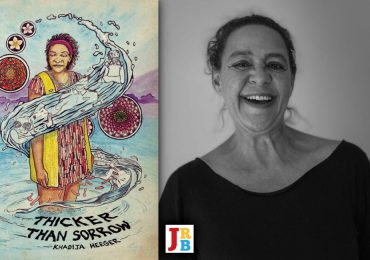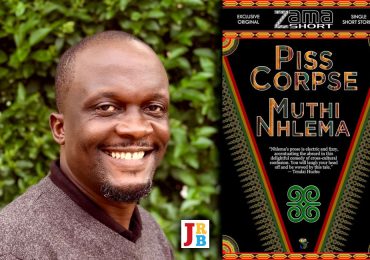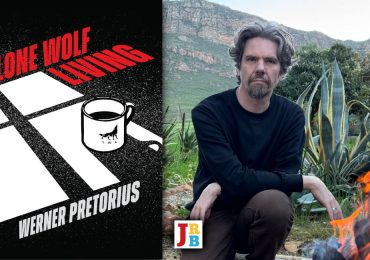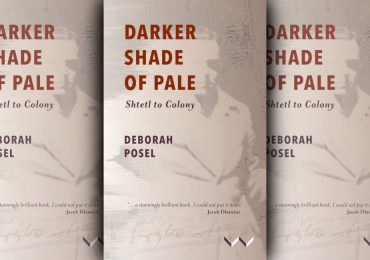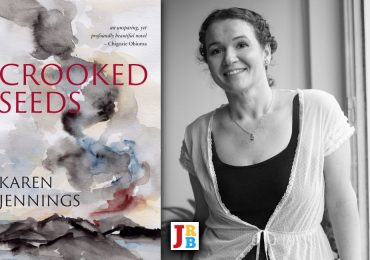JRB Editor Jennifer Malec interviews The JRB Patron Ivan Vladislavić about his new book, The Near North.
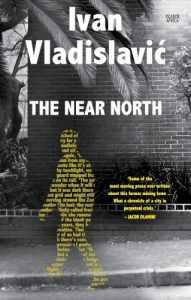
The Near North
Ivan Vladislavić
Picador Africa, 2024
Jennifer Malec for The JRB: You’re an acute observer of Johannesburg, and there’s a profound love there, mixed with exasperation and sometimes despair. Do you find you have to temper and shape your emotional responses to the city and the people and experiences you write about? There’s a level-headedness in your work on Johannesburg that, as a Joburger, I feel must be hard to maintain.
Ivan Vladislavić: In my daily life, I do my share of cursing at taxi-drivers and bureaucrats, but I avoid complaining in my work. Johannesburg provokes extreme responses, one way or the other, because it’s full of contradictions, always rising and falling at the same time, as I like to put it, and your sense of things depends on where you are at any moment. I try to see both sides of living here. My initial drafting tends to be unruly and excessive. Working through handwritten drafts and notes smooths out some of the irritation, and hopefully produces a complex perspective that does justice to the city.
The JRB: The Near North is a kind of continuation of Portrait With Keys, which was published in 2006, with the key difference being that you are now walking on a different section of the map, having moved from Troyeville, in the east, to Riviera, just north of the centre. Could you talk a little about the different sense of Johannesburg you found there?
Ivan Vladislavić: The north is obviously more comfortable, more predictable, cleaner, tidier … There’s more rising and less falling. This isn’t to say that everything is hunky-dory or that the problems besetting the rest of the city don’t spill across Louis Botha Avenue. In my walking around Houghton, for instance, I’m always surprised by the number of derelict properties, grand houses that have been abandoned or have fallen into disrepair. Empty buildings or plots appeal to the homeless and people such as recyclers looking for a convenient base, but the residents’ associations usually act swiftly against incipient disorder. While we’re not immune to Joburg’s ills here in the north, we are insulated against the worst of them, the kind you see in the inner city: some things might be challenging, but the real chaos is elsewhere.
The JRB: Following on from that, how do you think the city has changed since Portrait With Keys was published? As Joburgers we tend to catastrophise—‘it’s going downhill fast’—but when I was rereading Portrait With Keys ahead of this interview, I came to the realisation that things weren’t so different twenty years ago.
Ivan Vladislavić: It’s true that many of Joburg’s current problems were already visible when I began writing Portrait with Keys in the late nineties—but things are much worse now. We’ve been going downhill slowly.
There’s a scene in Portrait with Keys where the narrator has been to the Johannesburg Art Gallery to see an exhibition by Sophie Calle and a bell rings to signal that the gallery is about to close. He pops into the toilet on the way out and notices some street children hiding in a recess, looking for a warm place to spend the night. He considers ratting them out to the security guard, but in the end leaves without saying a word.
Ten years later, on a visit to JAG to see photographs by Jo Ractliffe, if I remember correctly, I found the basement full of water. A chain had been looped across the descending walkway to keep visitors out, but I stepped over it and snooped around. It was appropriately surreal. Fast-forward through another slow decade to the present and JAG is falling apart. Rereading the Portrait with Keys scene now, I’m reminded how pleasant and functional the gallery used to be, and struck by how much is presaged in that apparently innocent encounter with the children.
The emblematic event about decline in the city must be the Usindiso fire. The history of the building should render its fate ironic, but irony cannot withstand the horror of what happened there.
The JRB: What do you especially miss about Troyeville, and what do you appreciate most about Riviera? Have you come to feel at home in your new neighbourhood, recalibrated your compass?
Ivan Vladislavić: Being a creature of habit, I miss the familiarity of my old turf. I lived in the eastern suburbs for thirty-five years. The area had a rough-and-ready, unjudgmental ethos that I enjoyed. You rubbed shoulders with a broader cross-section of humanity at the Darras Centre than you do in the Killarney Mall, although appearances can be deceptive and you should never assume too much about people, as my book cautions. Being still a creature of habit, I do feel at home in my new neighbourhood. Familiarity breeds content. I appreciate the relative peace and quiet, the trees outside my window, and easy access to the places I need to go. Many of my friends are now on this side of town, although a few diehards draw me back to Troyeville from time to time.
Something else I miss about the eastern suburbs is the natural landscape (I mention this in my book too). You can see the original terrain of the Witwatersrand on Langermann Kop and Yeoville Ridge, and the whole area around Bez Valley, the place as it was before it was built over. By contrast, the land to the north has been thoroughly carpeted in suburbia.
The JRB: In The Near North, you write about how the geography of a city is connected to memory, and how a long absence can sever those associations: ‘Losing territory, in the sense of access rather than ownership, undoes memory.’ When we spoke about your novel The Distance in 2019, you said: ‘The fallible memory is surely at the heart of writing fiction.’ The Near North is categorised as non-fiction, and I’m interested: Do you restrict the creative freedom of your ‘faulty, inventive memory’ (another quotation from that interview) when you are writing non-fiction?
Ivan Vladislavić: Thanks for recalling the notion of the ‘fallible memory’. I’m reminded of something my sister says: my memory’s not so good, but my forgettery is fine.
When I’m writing something like The Near North, I rely more on observation and do more cross-checking. But at heart I’m an inventor, I like to make things up—something else we spoke about in our previous interview—and my approaches to fiction and non-fiction are not as different as you might expect. In both cases, I write off the top of my head. Then, depending on the nature of the text, I do some ‘retrospective research’, more of it in the case of non-fiction, checking the writing against the world, other texts or my own notes, and then writing back into the original to give it an air of authenticity. If you’re presenting something that makes a documentary claim, you want it to register with a potential reader’s memories or impressions to an extent, so I do some archival or experiential or virtual research and adjust my faulty remembering accordingly. I’ve been through phases of obsessive recording and documenting, but the shortcomings of this approach are always too obvious for me to persist, and now when I resort to it there’s usually some element of parody.
The JRB: In her review of The Near North, Bronwyn Law-Viljoen calls it ‘perhaps [your] most personal book yet’, and I wouldn’t disagree. Do you feel this book to be more intimate, more confiding, than your previous work? And if so, why do you think that is?
Ivan Vladislavić: The book deals with domestic life and is more intimate in that sense. The context in which I did much of the writing affected my mood and shaped the approach: I started the book during the Covid pandemic when many of us were housebound and communicating on platforms like Zoom. In the beginning, it was strange to look into the homes of journalists, for instance, to see them out of the studio and out of costume. Now of course we don’t find it strange at all to have some expert on global warming or cyberwarfare expatiating from their breakfast nook. These new ways of communicating produce a distanced intimacy, which shouldn’t be taken at face value, but they have eroded the boundaries between public and private. The fact that I drew on journals may also have influenced the tone of my book; likewise the constant news reports and images of illness and dying, which we don’t usually confront so publicly.
Whether the book is more confiding than anything else I’ve written is perhaps a slightly different question. Fiction can be a way to convey personal experience or express ideas or feelings frankly, precisely because they are mediated by invention. In our interview about The Distance, we spoke about narrative truth, the truth arrived at through storytelling. Many writers believe they get closer to the truth through fiction.
The JRB: I found it fascinating when you said at the book’s launch that one of the important moments in writing The Near North was your realisation that it was ‘not about Johannesburg’, which opened you up to other material: loss, displacement and mortality. Of course, these are themes deeply linked to the idea of Johannesburg itself. Do you think these thematic echoes helped expand the dimensions of the book?
Ivan Vladislavić: Yes, I think so. You’ve reminded me of Carson McCullers, whom I referred to in my conversation with Shaun de Waal at the launch. In a piece published in Esquire in 1959, she spoke about working in the dark as a writer, not really understanding what you’re doing. Then at some point, usually after ‘great effort’, there is an ‘illumination’, an insight that reveals the dimensions of the work and brings it into focus. In the same piece she says, ‘It is only with imagination and reality that you get to know the things a novel requires.’ This chimes with my understanding of the give and take between invention and observation, and my sense that the novel—or any other text—requires things of the writer, and in that sense dictates the terms. It was after drafting the passage in my book that refers to John Berger’s And Our Faces, My Heart, Brief as Photos, which did require great effort, that I had one of the illuminations McCullers mentions, a sudden understanding that the book had a will of its own. You’re right that these other themes are inextricable from our city, and it would be more accurate to say that I realised the book was not just about Johannesburg. The value of this insight was that it loosened my preoccupation with place and space, with the street addresses that anchor many of the texts, and freed me to write unmoored reflections on illness and death.
The JRB: In Portrait With Keys you refer to ‘tomasons’, objects found on city streets that are detached from their original purpose, and which become enigmatic or puzzling as a result. The randomly scattered nails embedded in tar that you collect sightings of on your walks in The Near North are a new example. And yet, instead of accepting their uselessness, you attempt to make sense of them, marking their locations on a map to see if they form a pattern. Why do you think you had this impulse, and what did you make of its ineffectiveness?
Ivan Vladislavić: It could be that the nails prompt questions about their purpose because there are so many of them: they appear to be a constellation, points in a plan, as in a join-the-dots puzzle.
The text in the background is my first novel, The Folly, where the protagonist Nieuwenhuizen lays out a plan on an empty plot of land, using nails joined together by lengths of string, and then tries to get the unimaginative Mr Malgas to ‘see’ the mansion it represents. I find echoes of both these characters, the visionary and the pragmatist, in The Near North, especially in the scenes on Langermann Kop. The passage you’ve singled out, where the narrator marks the location of all the nail heads on the Witwatersrand Street Guide, and then joins them up in one way and another, hoping for a revelation, suggests to me that there is something comical about our efforts to make sense of the world.
The idea of the tomason, which I borrowed from the Japanese artist Akasegawa, gets to people. One of the tomasons in Portrait with Keys is a short metal pole on Roberts Avenue in Kensington. I thought I had a pretty good idea what it was, but half a dozen readers were happy to set me straight. The same thing has happened with the nails in The Near North. Earlier this year I met a former Joburger who said he’d noticed these nails himself. His theory is that they’re left over from the resurveying of Houghton streets when the servitude lanes between erfs were done away with. It’s an appealing story, but I haven’t had a chance to verify it.
I thought of including a strand of tomasons in The Near North, ‘grand tomasons’ to be precise, because here in the north even the useless objects on the streets are magnificent, but in the end I decided to keep them to myself.
The JRB: Joburg is divided along many lines, but one that stands out in The Near North is the division between tree-lovers—‘Joburg is the biggest man-made forest in the world’—and tree-haters, who believe trees harbour criminals and make a mess (not forgetting the associated piece-work industry of informal tree fellers, whose signs adorn almost every intersection). What do you make of this arboreal schism?
Ivan Vladislavić: It’s hard not to be sarcastic about this. I’ve seen people dance with joy when a grand old tree is cut down. There’s a similar reaction when a chimney or building is imploded: delight at seeing some tall thing laid low.
My friend Dave has been planting trees on Langermann Kop for twenty years. Recently he showed me some trees with their bark stripped off right down to the roots. The bark has a medicinal use, but he’s sure it wasn’t taken by herbalists, who usually harvest sustainably, but by an opportunistic dealer stripping products to sell in bulk.
Many of our common resources are treated this way. Stealing plants out of a park or chopping down trees for firewood is similar to stealing manhole covers or chopping down robots for scrap metal. Some of this is driven by survival, and some of it is merely rapacious or irresponsible. I’m reminded of what’s happened to cultural facilities like JAG or the archive of town and building plans at the Metro Centre, which has been in the news.
The JRB: When Dave cultivates a garden in a wild space on a public koppie, he encounters both resistance and enthusiasm from nearby residents, about which he says, sagely, ‘You have to relinquish control.’ You compare your writing about the garden to the garden itself: ‘It’s public property. I cannot put a wall around it and I don’t need to. In five years, or ten, […] I might still be tending these pages.’ Could you expand on this idea of Joburg as material, both public and intensely private or personal?
Ivan Vladislavić: Dave and I have had a regular lunch date at the Troyeville Hotel for many years. A few months ago, we had a discussion there to launch The Near North. We did it in the rooftop bar and we had to delay the conversation for half an hour until the noise from rush-hour traffic on Albertina Sisulu died down. Discussing the book there with people who live in the area was satisfying. Speaking about the garden in the book and the garden on the hill brought the real-world material and the literary project together.
In my writing about the Langermann Kop Garden, I emphasise the fact that the people behind it, Dave and Patrick and those who helped them, wanted to do something for the community, that it was a public-spirited gesture. During our launch conversation, Dave argued that I make too much of this, his motives were more selfish than that, he made the garden mainly for his own pleasure. It was an amusing difference of opinion.
Writing arises from mixed motives too. There’s a productive tension between writing for yourself, for your own pleasure, to clarify what you think or feel; and writing for the reader, to give the reader pleasure, to allow them to think or feel something. The act of writing is usually solitary and private, but the text comes to life when it’s shared. The shock of publishing (making public) is softened for a certain kind of writer by the thought that reading is also a private activity. Even if the reader chooses to open the book on the bus or the beach, its meaning is finally produced in the relative privacy of their imagination.
The JRB: Depicting a close relationship with Johannesburg inevitably involves depicting violence. In this book, you are mugged on Commissioner Street, a man impales himself on a spiked gate and, terribly, you come home from a trip overseas to find that the man looking after your house has been killed. This is the most violent event you have written about, I believe. How did you approach it?
Ivan Vladislavić: After my friend Oscar was murdered, I wrote without thinking, as a defensive reflex, and didn’t go back to this writing for more than a decade. I had no wish to write anything else about that difficult time. But as The Near North took shape, it was one of the things the text required. I drafted the passage from memory, meaning to do some retrospective research for more detail, but when I opened my notebooks, I couldn’t read them. The event has probably found a bearable form now, beyond my control, and I’d be wise to leave it at that, but I may have to return to it at some point.
The JRB: You compare living in Johannesburg to living in the ‘hot shadow of a volcano’, and ask: ‘why can’t we get out of harm’s way? Why do we cling to the places we know?’ Do you think writing The Near North brought you close to an answer to this question?
Ivan Vladislavić: Eduardo Galeano had an acute eye for the small, particular story that says something resonant about human experience. The story of the people of Armero and the obliteration of their town in a volcanic eruption, which appeared in one of Galeano’s books more than thirty years ago, seems remarkably apt today when so many people are living in the path of destruction. I don’t expect Johannesburg to vanish overnight, but as individuals we sometimes face personal disasters that threaten to carry everything away.
Writing is a large part of my attachment to Johannesburg. You write to be rid of something in a way, to set it down at a distance from yourself. Many writers say they are relieved when a book is finished and can be left behind. But at the same time, you build a tenuous kind of home in books and they keep you in place. A reader told me recently that I cannot leave Johannesburg. She practically instructed me never to move to Cape Town. I also had an amusing encounter with the writer Tymon Smith. We bumped into one another after a long time and were both surprised. ‘Still in Joburg,’ I said. To which he replied, ‘Yes, and so are you. You’re a lifer.’
The attachment to home, to familiar places and people, remains a powerful thing, even in an era when so many are on the move and desperate to be elsewhere. I’ve been thinking about this since the fall of Assad. It’s amazing how quickly displaced people packed up their refugee lives and hurried home to Syria, despite its uncertain future. There were queues at the border posts within a day of the regime’s demise.
The JRB: Finally, you write: ‘We should be kind to our younger selves—it is good practice for how to treat the younger people around us as we age.’ This seems very wise advice. Do you follow it?
Ivan Vladislavić: It’s easier to be wise on paper than in practice. I’m quite hard on my younger self, though I make an effort to understand him in his context. We’re all shaped by the times we grow up in, by what they prohibit or make possible, and you should be able to see this more clearly as you grow older, but it takes some doing. When my friends and I have a conversation that starts, ‘If I were a young person today …’, I try not to ignore the paradox wrapped up in that phrase.
- Jennifer Malec is the Editor.

